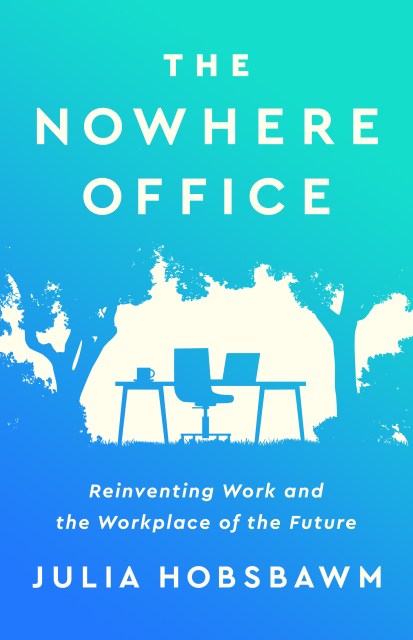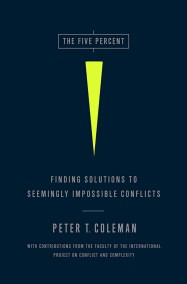Promotion
Use code BEST25 for 25% off storewide. Make sure to order by 11:59am, 12/12 for holiday delivery!
By clicking “Accept,” you agree to the use of cookies and similar technologies on your device as set forth in our Cookie Policy and our Privacy Policy. Please note that certain cookies are essential for this website to function properly and do not require user consent to be deployed.
The Nowhere Office
Reinventing Work and the Workplace of the Future
Contributors
Formats and Prices
- On Sale
- Apr 12, 2022
- Page Count
- 208 pages
- Publisher
- PublicAffairs
- ISBN-13
- 9781541701946
Price
$16.99Price
$21.99 CADFormat
Format:
- ebook $16.99 $21.99 CAD
- Hardcover $27.00 $34.00 CAD
- Audiobook Download (Unabridged) $18.99
This item is a preorder. Your payment method will be charged immediately, and the product is expected to ship on or around April 12, 2022. This date is subject to change due to shipping delays beyond our control.
Buy from Other Retailers:
Named one of the Financial Times' BEST BUSINESS BOOKS OF 2022
What has changed in the workplace? Everything.
The traditional office was probably doomed anyway. Then a global shutdown changed everything we thought we knew about work, including where and when it needed to take place. Automation and the Fourth Industrial Revolution have accelerated, and perhaps as much as one third of the world’s permanent workforce will soon become remote. In The Nowhere Office, Julia Hobsbawm offers a strategic and practical guide to navigating this pivotal moment in the history of work and provides lessons for how both employees and employers can adapt.
Hobsbawm draws on her extensive networks in business, academia, and entrepreneurship across generations to offer new ideas about how to handle hybrid working, as well as provides deep insight into how the way we work is being transformed by larger issues such as community, hierarchy, bias, identity, and security. The Nowhere Office describes a unique moment in the history of work which, if understood and handled correctly, can provide a springboard for the biggest transformational change in the workplace for a century: something better, more meaningful, and more workable for everyone.
-
“A tour de force of insight, clarity and . . . common sense.”Adrian Wooldridge, global business columnist, Bloomberg
-
“Where else are you going to find such enlightening insights into the future of work?”James Bell, VP, Pew Research Center
-
“A masterful analysis of the reinvention of work in a post-office world.”Andrew Keen, author of How to Fix the Future
-
“Julia Hobsbawm is brilliant at seeing tomorrow’s ideas today.”Joy Lo Dico, columnist, Financial Times
-
“Even-handed and sensible appraisal of the future of work. . . A priceless injection of nuanced thinking and practical suggestions.”Rory Sutherland, vice chairman, Ogilvy UK
-
“The Nowhere Office brilliantly captures the zeitgeist issue of our times—how and where we work.”Ayesha Hazarika, journalist and broadcaster, Times Radio
-
“Every manager or leader who is wondering what to do next about their offices and people needs to read The Nowhere Office.”Ben Page, Global CEO, ISPOS
-
“We need big bold thinkers like Julia Hobsbawm right now more than ever.”Polly Mackenzie, chief executive, Demos
-
“The pandemic has changed the way we work. Julia Hobsbawm’s The Nowhere Office makes the case for embracing the opportunities this brings.”Financial Times, “The books to read in 2022”
-
“An intriguing consideration of this bewildering “liminal in-between time in the history of work.”Kirkus
-
“[A] concise and highly readable assessment of where we are now, how we got here and where we might go.”Forbes
-
“Hobsbawm explores the future of both how — and where — we will work. It is in part a cast back over long-term trends that have shaped our working lives, part a treatise on the future of work and part practical handbook…While the book is clear-eyed about current and future challenges, the tone is optimistic…This enthusiasm will refresh anyone grappling with ‘the new normal.’”Financial Times
-
“Hobsbawm envisions a world in which a hybrid home/office model is the new normal…her message that ‘work can and should be not only a source of raw income but also a purposeful life itself’ is inspiring. CEOs, managers, and employees will take heart in this encouraging thought experiment.”Publishers Weekly
-
“Julia Hobsbawm, a British entrepreneur and public speaker on social health, examines why we need to rethink the necessity of being in the office and both the benefits and pitfalls of encouraging a work-from-home culture.”Fortune
-
“As higher education shifts to the new normal of endemic Covid, we must rethink the campus. The Nowhere Office is an excellent book to catalyze a conversation about the hybrid campus.”Inside Higher Ed
Newsletter Signup
By clicking ‘Sign Up,’ I acknowledge that I have read and agree to Hachette Book Group’s Privacy Policy and Terms of Use







